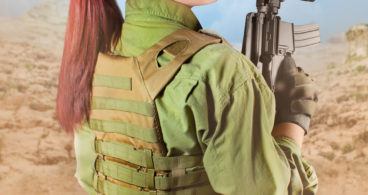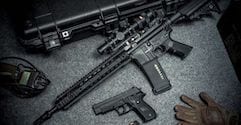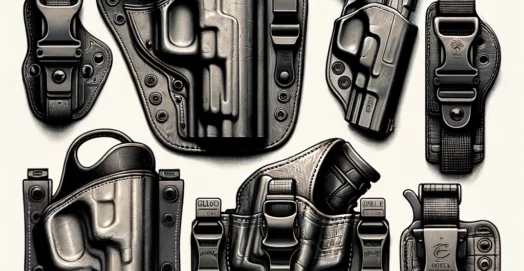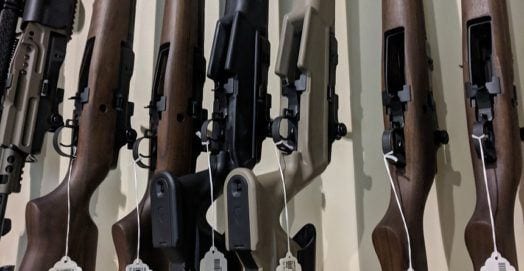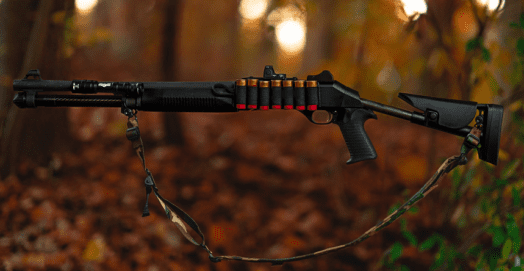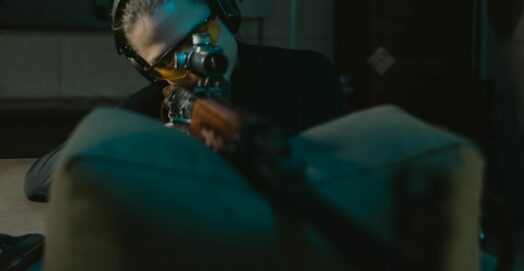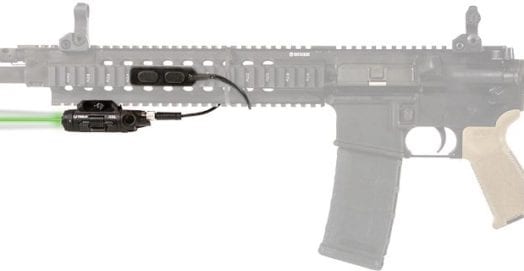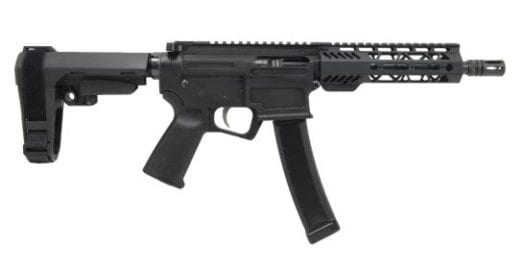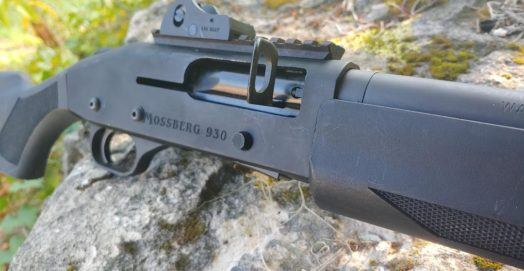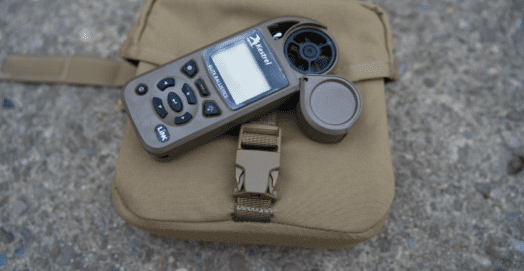Kestrel Ballistics Meters and HUD: A Long Range Review

Imagine that you’re finally going for it, the 1000 yard shot that many shooters aspire to. After months of finding the custom load that works the best for your rifle, getting a scope that you see well through, and lots of practice, you’re ready to try.
You bring 50 rounds of your hand-loaded ammo, set up on the bench, get a trusty spotter, and go for it. 45 rounds, and more than a little frustration later, you hear him say, finally “hit.”
Meanwhile, the guy at the next bench over sets up his rifle takes a box of commercial ammunition and spends a moment consulting with what looks like a small tablet. He takes a second to dial in his scope for windage and elevation, takes five shots to warm up the barrel, and makes the hit on his sixth shot.
The difference between these two shooters isn’t time, experience, or even luck. The second used a great ballistics meter, and we’re going to talk about two here so that you can spend your time making shots at extreme ranges.
Contents
What is a Ballistic Computer?
Shooting is as much a science as it is an art. As much as I like the idea of using iron sights, practicing your craft, and mastering difficult shots, we have to admit that for long-range shooting there is a great deal of math involved.
There’s a lot that goes into how well and how far a bullet flies, such as the bullet itself, barrel length, humidity, wind, temperature, the spin of the earth, and so on. At short to medium ranges, you can learn how to compensate a lot of that with instinct and experience. But at 1000 yards or more, we may as well take advantage of a little modern technology to make things easier.
Sorry if this brings up bad memories from standardized tests, but take a look at the following problem:
James wants to shoot a target 1250 yards away. On a hot July day with a slight breeze, how many mils of windage and elevation will he need to adjust his 24” barreled rifle firing commercial .308 so that it hits on the first round if it is slightly muggy out?
My quick answer to that is: the heck if I know, and I’d need about a week to learn enough math to be able to give you a reasonable answer.
Instead, let’s do this the intelligent way with the Kestrel Ballistics5700X Elite.
Kestrel Ballistics 5700X Elite
In simple terms, the 5700X Elite solves exactly the kind of problem that I posed above. It takes the information it gathers from both the environment and your input, then gives you the information you need to dial your rifle correctly to make the shot. Some folks think that using a computer like this is a crutch, but I’d argue that it is a tool. We don’t make fun of the people at NASA for using computers to build spacecraft, and this is, quite literally, the same kind of math involved. Our projectiles are just a little bit smaller.
Technically, a fair bit is going on with this meter, so that’s what we’ll focus on here.
At the core of the system is a computer by Applied Ballistics, which calculates the drop of a bullet accounting for aerodynamics, spin, the Coriolis effect, and more. It gets much of this data from your input, but the meter itself also takes humidity, wind speed, and directional data that makes that calculation more accurate.
The level of detail of data is what makes the difference between a hit and a miss at long ranges, and it’s what we’re so impressed by in this ballistics meter. It even takes into account altitude, barometric pressure, and wind chill, all of which can have an effect on how an object, in this case, a bullet, flies.
You can read the outputs on the display of the unit itself, which is built like a tank and has a fairly easy to read display. Or, using Bluetooth and their LiNK app, you can tie the meter to your phone. From there, you can manage several different profiles, save data, and the like to save this information for the future.
From there, you can export that data to a computer: we think this would be especially useful for hunters who want to take the time, before a season, to get to know how an area behaves before needing to take long-range shots at game. The data tools built into the 5700x ballistics meter are an outstanding suite that will help you become a better shooter if you’re willing to invest the time to learn how to make the most of them.
In terms of using the data you get from the unit, Kestrel makes things relatively easy: you can get the shot adjustment data in mils, MOA of two kinds, or clicks. This makes it a flexible system you can use with the vast majority of rifle and optic setups. Also, the ballistics meter itself has space to store data on it. Physically, the unit has been both drop tested and is rated to be pretty waterproof. This is a piece of kit that is meant to be taken into and out of rough conditions and will keep working well and giving you the data that you need to make the most difficult of shots quickly and efficiently.
In terms of use, obviously, long-range shooters will find the most benefit from a ballistics meter. With that said, even those of us doing things like hunting at moderate ranges could do well with a lot more information.
Most of us do our practicing at a range, usually under conditions we choose. I mean, who wants to go to the range in a cold, spitting rain? But when we’re doing that, we’re zeroing our setup and known ranges and distances under favorable conditions. That might not be how we’re hunting later on in the year, so knowing exactly how rain and a drop in temperature will affect our shots at the ranges we’re hunting can result in more game in the bag and more ethical kills.
By itself, the 5700x ballistics meter is an amazing piece of kit that will distinctly improve your capability to make consistent long-range shots. But if you want to take things up a further notch in terms of features and capabilities, you can opt for the full kit, which includes some things that we’d be very interested in.
Kestrel Ballistics 5700 Elite with HUD Kit
The Kestrel Ballistics 5700 Elite Kit with HUD is a truly world-class kit for the calculation of long-range shots.
At the core of this system is the 5700 Elite ballistics meter, which is effectively a different configuration of the kit that we have already covered at length: it’s a rugged, well built ballistic computer that will do anything you or I would need it to do and then some.
With any long-range shooting situation, it’s advisable to put together a DOPE range card: these are the notes that a shooter and spotter develop to get their ballistic data down, consistently, over time, and between range sessions to make it easier to make long-range shots when it counts. In the past, I’ve done with a pocket notebook and a pen, and thought myself pretty slick for it. Looking at the Kestrel HUD, though, I think I understand how people who saw the first airplanes must have felt while riding horses.
The HUD included with this kit is a small, backlit unit that attaches directly to your rifle with an included Picatinny mount, and displays the data collected and output by the 5700 Elite ballistics meter. More than just a range card, it can also count counts for you, has a target card screen, and is built to last under recoil.
A few of the tactical features are impressive. The idea of having your range card mounted directly to the gun instead of having to shift positions to look at it builds more consistency into the overall equation, which makes shots more accurate over time. Second, while we like how handy things like Bluetooth are, the fact that the HUD is hard wired to the computer itself again adds to reliability and consistency, things that matter a lot in long-range shooting. Also, the red backlight is a nice touch that will avoid ruining your night vision if you’re shooting in poor lighting conditions. There’s also a nice canvas bag with MOLLE attachments included keeping everything nice and secure.
For those in DoD applications, this kit is Berry Compliant, which means that enough of it made in the USA so that it can be used for certain contracts or settings where that is a requirement for spending government money. Which, if you are one of those folks who can spend taxpayer money on an awesome kit like this, we’re more than a little jealous.
In terms of added capability, the addition of the HUD to the computer gets the data out of the 5700 Elite and right in front of your face without having to shift and mess with the computer itself. It’s an expensive addition to be sure, but it takes movement and time out of your practice and shooting sessions. That savings in time and movement may well lead to more consistency, and better shooting downrange.
We can see this kit being attractive to three kinds of users.
First would be Department of Defense folks, whether contractors or actively serving. This kit was developed with harsh environments and the need for relative stealth in mind, and we think this would be a good addition to a sniper team, given our very limited experience in those environments.
Similarly, SWAT teams tied to civilian law enforcement would do well to pick up this kind of kit to help make shots when innocent lives are on the line.
Finally, this would be, as far as we can tell, the ultimate piece of enthusiast kit for getting better at extreme-range shooting. The applications in the competition world are obvious, and we’re sure folks are already using these there. Where this may be extremely useful is in hunting where the distances are sometimes extremely long, and the game is somewhat small, for instance, mountain goats or smaller deer.
Parting Shots…
Whether alone or in a kit, the Kestrel Ballistics 5700 series of ballistic meters are part of an overall system that can make for potentially accurate shooting out to the very limits of your capabilities, as well as those of your weapon and ammunition. To be able to take great advantage of the information that these powerful computers can deliver, you’ll new a few other things. A great, and consistent, rifle is one of the major components of shooting well, as is a good optic to put on it. From there, ammunition that the gun shoots consistently will go a long way to making distance shots possible. But at the end of the day, all of the gear in the world will not make you a good shooter. Patience, practice, and the wisdom to learn from good information is what makes a good shooter.
These ballistic meters are, as best we can understand them, basically scientific-quality instruments that are meant to provide you with the data you need to improve your shooting. If you’re serious about long-range shooting as something you are okay with investing serious time, effort, and money into, these are the meters that can certainly get you there. Pretty far removed from the world of cheap “tactical” dodads that you can MLOK to every surface of a modern rifle, the Kestrel Meters are serious shooting equipment that serves professionals well in some of the worst conditions on the planet.
If you want to stretch out a quality rifle to several thousand yards, the data provided by these systems may well help you do that, assuming the rest of your kit is dialed in and you do your bit as the shooter. We’d recommend them to anyone who wants to make shooting 1000 yards look easy.







